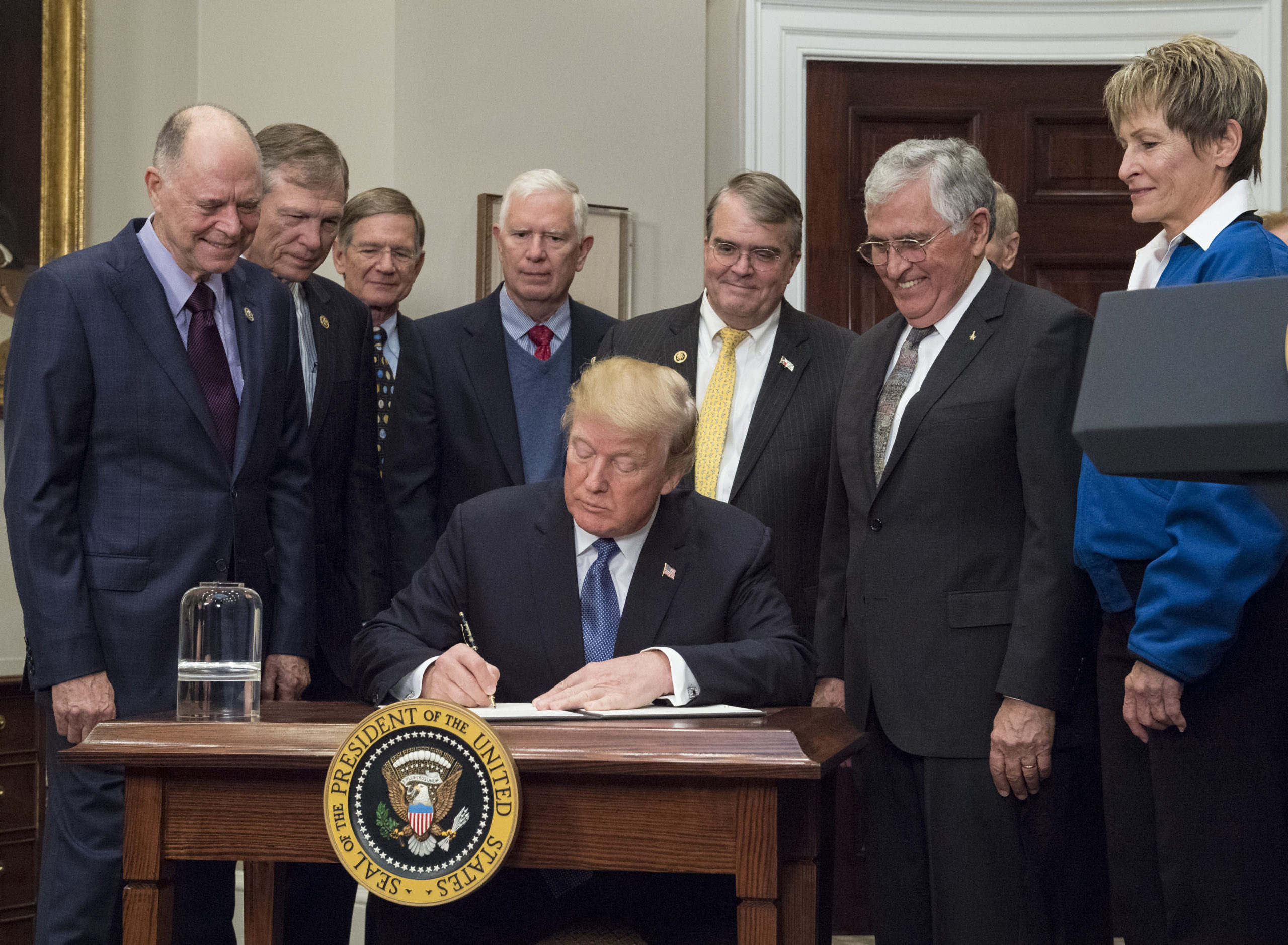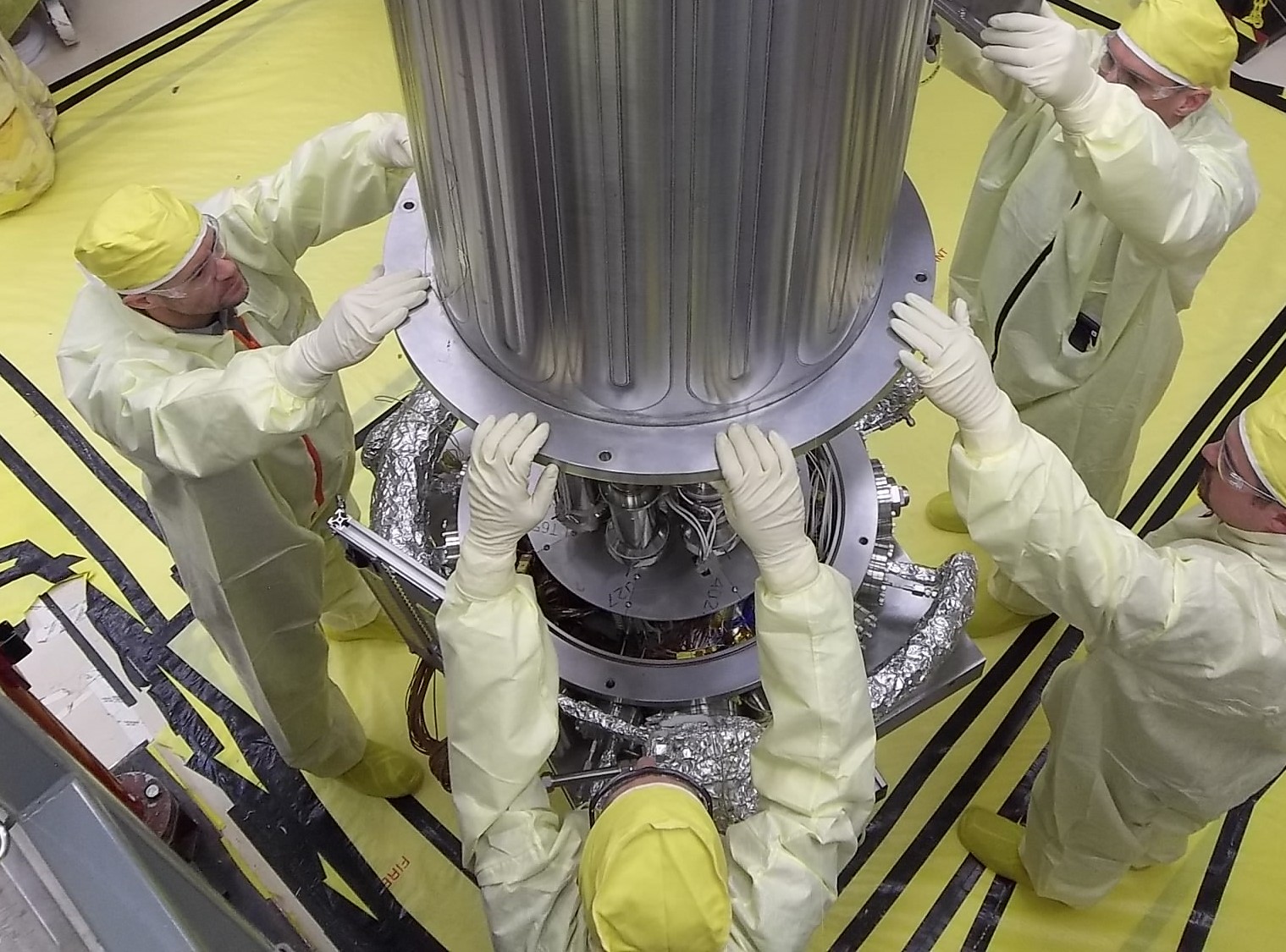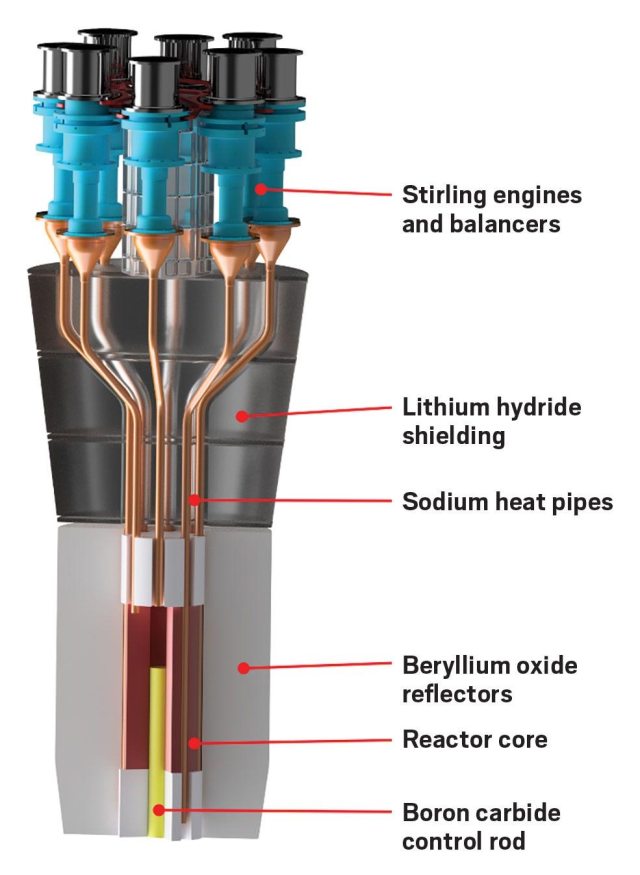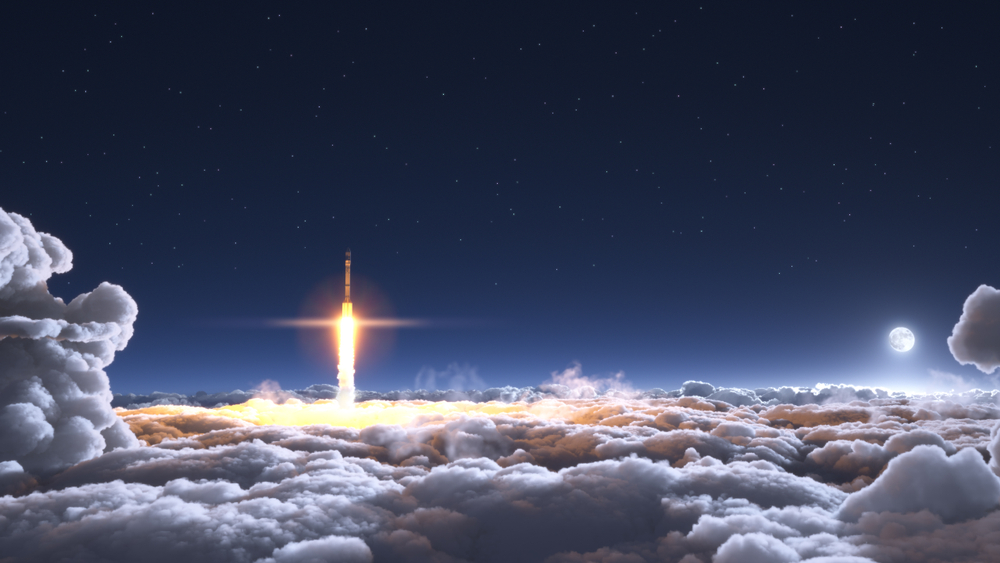What memorandum are we talking about?
This week, U.S. Secretary of Energy Dan Brouyetti AdministratorNASA Jim
In general, the memorandum of understanding representsis a type of agreement between two or more parties. It expresses a coincidence of goodwill between the parties and indicates an assumed common line of action.
The latest agreement between the Department of Energy and the space agency was discussed at the Secretary of Energy's Advisory Council meeting in October 2020.It supports President Trump's Directive 1 on space exploration and the overall U.S. national space policy.
Trump's 2017 "Space" Directive
In late 2017, Trump signed Space Policy Directive No. 1 at the White House, a major change in national space policy that envisions a U.S.-led integrated program with private-sector partners to return humans to the moon to Mars and beyond.
 Representatives of the Congress and the NationalThe Space Council joined President Donald Trump, Apollo astronaut Jack Schmitt and current NASA astronaut Peggy Whitson on Monday, December 11, 2017 to sign the President's Space Policy Directive 1, a change to national space policy. envisions a comprehensive US-led program with private sector partners to return humans to the moon, followed by flights to Mars and beyond.
Representatives of the Congress and the NationalThe Space Council joined President Donald Trump, Apollo astronaut Jack Schmitt and current NASA astronaut Peggy Whitson on Monday, December 11, 2017 to sign the President's Space Policy Directive 1, a change to national space policy. envisions a comprehensive US-led program with private sector partners to return humans to the moon, followed by flights to Mars and beyond.
NASA / Aubrey Gemignani
The politician called on the NASA administrator to “leadan innovative and sustainable research program with commercial and international partners to ensure human expansion in the exploration and development of the solar system and to gain new knowledge and opportunities on Earth. " All this already allows the United States to more effectively organize public, private and international contributions to the project of returning people to the moon and is laying the foundation that will ultimately allow people to explore Mars.
“The directive that I am signing todaywill reorient America's space program to human exploration and discovery, ”President Trump explained then. “This is the first step towards returning American astronauts to the moon for the first time since 1972 for long-term exploration and use of its resources. This time, we will not only set our flag and leave our footprints - we will lay the foundation for a possible mission to Mars and, possibly, someday, to many other worlds. "
What does the conclusion of a memorandum mean?
According to the same directive and NASA's Artemis program, America will landthe first woman and the next man to the moon by 2024 and by the end of the decade will besustained and consistent exploration of the Moon in preparation for the first manned mission to Mars.
“From advances in better understanding of the moon toTo provide nuclear fuel for the Voyager 1 and Voyager 2 launches into space, the Department of Energy and NASA have actively cooperated for decades on the space mission of our country, - said Secretary Bruyette. "This new Memorandum of Understanding will continue our work together to achieve the next generation of space innovation and exploration."
 NASA and NNSA engineers lower the vacuum wallchambers around the kilowatt reactor using Stirling technology (KRUSTY system). Air is later evacuated from the vacuum chamber to simulate the space conditions during the operation of the KRUSTY.
NASA and NNSA engineers lower the vacuum wallchambers around the kilowatt reactor using Stirling technology (KRUSTY system). Air is later evacuated from the vacuum chamber to simulate the space conditions during the operation of the KRUSTY.
Los Alamos National Laboratory
“Artemis depends on a coalition of partners fromthe US government, industry and the world, ”explains NASA Administrator Jim Bridenstine. “The expertise of the Department of Energy, Science and Technology continues to be critical to the success of NASA missions. Together we will create and prepare systems for further exploration of the Moon and sending people further into space, and all this for the benefit of humanity on Earth. "
The Memorandum of Understanding highlightspotential areas for collaboration, including scientific observations of the early Universe from the Moon. We're talking about the Gateway project, as well as high-performance computing, modeling and simulation, planetary defense against near-Earth objects, sensor and satellite development, space situational awareness, space weather, space nuclear power and much more. ;
It was the last topic that excited the public. Nuclear power on the moon? Seriously?
Yes.
Why build a nuclear reactor on the moon?
In September it became known that at the end of thisThis year, NASA and the Department of Energy will seek proposals from industry to develop a compact nuclear power system that can support the agency's long-term plans for exploration of the Moon and Mars.
“We plan not just to return with a person toThe moon and stay on the moon. This means that we will need energy - its source will be nuclear power, and for it, among other things, a lunar energy system will be created. The Department of Energy's expertise and technology will be critical to the success of our missions. Only together we will be able to do everything necessary to study the Moon and send a person further into space for the benefit of the Earth and all mankind, "- said the head of NASA Jim Bridenstine.
 Artistic concept for a new energy fission system on the lunar surface / Source: NASA
Artistic concept for a new energy fission system on the lunar surface / Source: NASA
Earlier it became known that DOE and NASA announceda tender for the development and construction of a nuclear reactor with a capacity of at least 10 kW on the moon, which will be able to supply energy to all equipment and living quarters at times when it will be impossible to use solar energy. The winner of the tender will be named in 2021, and the lunar nuclear reactor itself should be ready in 2027.
The Department of Energy said 10 kW would be enough to power one hundred 100-watt light bulbs, or roughly 1 / 100,000 of the power produced by a typical 1000 MW industrial reactor.
 Conceptual image of the nuclear power system for the Moon and Mars NASA
Conceptual image of the nuclear power system for the Moon and Mars NASA
“It may not seem like much, butthis will be enough to power some of the infrastructure and equipment needed by astronauts on the lunar surface, ”a Department of Energy spokesman said at a briefing to the Technology, Innovation and Engineering Committee of the NASA Advisory Board.
The full presentation of the briefing is available online for your viewing pleasure.
Artemis III's mission to be completedthe landing of astronauts on the lunar surface is scheduled for 2024. However, before that, there will be two more launches - in 2021, Artemis I, within which the European Service Module (ESM) for the manned spacecraft Orion will be launched using the Space Launch System (SLS) super-heavy launch vehicle and will spend a total of three weeks in space, and then will have to return to Earth (here the ship will be tested for entering the Earth's atmosphere at high speed - its thermal protection will be tested). In 2023, during Artemis II, they are going to fly around the moon on the ECM with a crew on board.

“This is an opportunity for a sustainable presence atTo the moon, especially to survive on a moonlit night, ”explained Anthony Kalomino, manager of nuclear systems at NASA's Space Technology Office, explaining the need for a nuclear reactor on the Moon. "The lunar surface gives us the opportunity to manufacture and test in flight a space fission system."
NASA and DOE in recentFor years they worked together on a space nuclear power project called Kilopower, which demonstrated a one-kilowatt reactor technology at the Nevada Proving Grounds in 2018. This project used highly enriched uranium (HEU) to create an efficient and lightweight reactor.
What are the consequences to expect?
NASA, US Department of Energy and variousnuclear laboratories are promoting the idea of a small modular reactor for nuclear projects on the Moon and Mars. Experts are confident that this technology is ideally suited to the needs of people living for long periods in space.
Since each of these mini-reactors,likely to have an uninterrupted output of only 10 kW, several reactors on the Moon or Mars will be required to fulfill the necessary functions for their inhabitants and meet the necessary power requirements.
However, there is still no certifieddesign, no test reactor, no real reactor, no reliable way to send such a reactor to the moon. As we know, rockets have the unfortunate habit of sometimes exploding during or shortly after launch. However, 2026 is an ambitious target date for the implementation of all systems. The deadline is the end of this decade. It is logical that such ambitions raise public concern.

Although the reactor design has not yet been determined,it will likely be necessary to use highly enriched uranium (HEU). It is worth noting that this is already a severe violation of the agreement on its distribution. As Dr. Edwin Lyman of the Union of Concerned Scientists said in an interview with PBS Newshour, “This could spur or start an international space race to build and deploy new types of reactors requiring highly enriched uranium.”
Considering the usefulness of HEU for usenuclear weapons and new probes currently being sent to the Moon and Mars by countries considered "unfriendly" by the US (such as China and the UAE), it does not take much imagination for authorities to foresee the temptation to steal uranium. Will the US post guards around its lunar reactors? Will we see terrorism on the moon or even war? Such questions, for example, are asked by journalist Linda Pentz Gunther in her column for a project for Beyond Nuclear, a non-profit organization based in Maryland, USA, concerned with nuclear safety issues.
There is one more important point to consider. In the face of ever-expanding crises on Earth, caused by the devastating effects of climate change and the current pandemic, spending exorbitant amounts of money to install reactors on the Moon or Mars may seem unwise and irresponsible. You can often hear this opinion: before mastering new worlds, it is worth putting in order the planet that we have damaged so much.
And yet, despite the huge costs and questionsNASA and the DOE are eagerly awaiting proposals regarding the ethics and safety of reactors and the waste they will produce on another planet.
The Moon is now seen as a launch pad for Mars. There is a high probability that it will become another nuclear dump for earthlings.
Read also
The annual mission in the Arctic has ended and the data are disappointing. What awaits humanity?
On day 3 of illness, most COVID-19 patients lose their sense of smell and often suffer from a runny nose
Scientists have found out why children are the most dangerous carriers of COVID-19